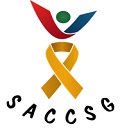Original Research
Does hair curl variation influence the efficacy of scalp cooling in the prevention of chemotherapy-induced alopecia in breast cancer patients? A randomised pilot trial
Submitted: 14 April 2021 | Published: 24 June 2021
About the author(s)
Odirile Obuseng, Department of Radiation Oncology, Faculty of Health Sciences, University of Cape Town, Cape Town, South AfricaNonhlanhla Khumalo, Division of Dermatology, Department of Medicine, Faculty of Health Sciences, University of Cape Town, Cape Town, South Africa
Thurandrie Naiker, Department of Radiation Oncology, Faculty of Health Sciences, University of Cape Town, Cape Town, South Africa
Tselane Thebe, Department of Radiation Oncology, Faculty of Health Sciences, University of Cape Town, Cape Town, South Africa
Abstract
Background: Scalp cooling is reported to reduce Chemotherapy-induced alopecia (CIA).
Aim: To compare the efficacy of scalp cooling for straight versus curly hair in a pilot trail.
Setting: A radiation oncology breast cancel clinic.
Methods: This 20-month randomised controlled trial recruited females (18–65 years) to receive chemotherapy (Adriamycin or Epirubicin and Cyclophosphamide followed by Paclitaxel) with or without scalp cooling. Outcomes were percentage alopecia (Severity ALopecia Tool) by hair curvature and treatment retention.
Results: Forty eight patients (24 per group) were randomised; four in each group withdrew before first study visit and photographs of three in the cooling group could not be found for assessment. Thus 77% constituted the intention-to-treat population (17 cooling vs. 20 control). Agreement on alopecia severity was good overall (intra-class correlation coefficient [ICC] = 0.94; 95% confidence interval [CI]: 0.85–0.97) and at six of seven time points. Overall, cooling significantly reduced CIA, relative to no-cooling (58.15 ± 28.46 vs. 37.29 ± 20.52; p = 0.0167); however, percentage alopecia was cosmetically significant. There was no difference in CIA between cooling participants with straight (n = 8) versus curly hair (n = 9), (p = 0.0740).
The number of patients completing the various cycles of chemotherapy declined from 77.1% at cycle 1 to 18.8% at cycle 7 for the whole study, and from 100% each to 17.6% and 30.0% for cooling and control groups, respectively (p = 0.451).
Conclusion: This study suggests that hair curvature has no significant impact on the efficacy of scalp cooling to reduce CIA, however, this requires confirmation.
Keywords
Metrics
Total abstract views: 2602Total article views: 2247



